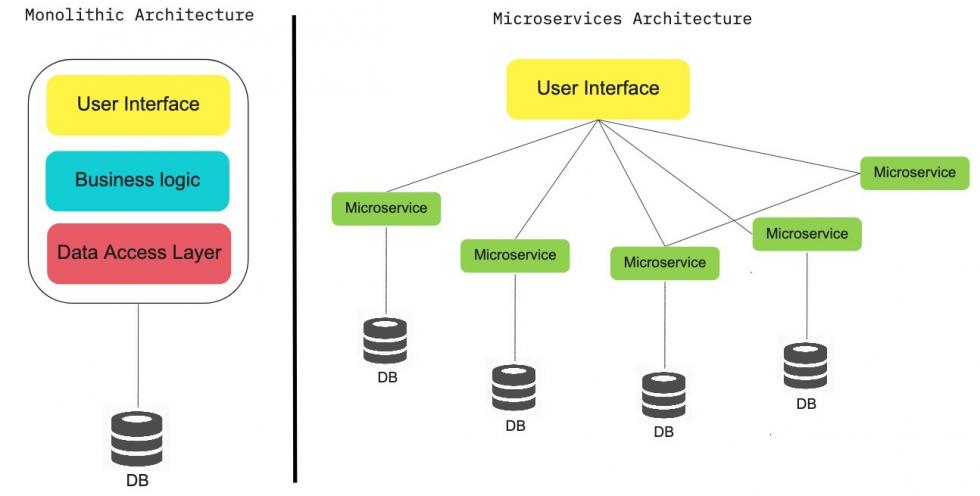
Why Apply Modular Architecture in Mobile App Design
Last update: 09/04/2024
Modular mobile app design and development means building apps from smaller, controllable pieces like modules, components, and subsystems. This approach enables module replacement or addition without affecting the entire system. It also allows adaptability to evolving business needs and customer expectations.
Why Modular Architecture for Your Mobile App
Customer engagement today depends greatly on mobile apps and our mobile world reflects this dependence. However, as features and user expectations evolve, monolithic applications can become exceedingly complex and challenging to manage, impeding growth and innovation. This is where modular architecture steps in as your secret weapon.
Envision your app as a sprawling metropolis and consider all its many detailed components. A monolithic approach resembles a single district, which includes everything. Updates and changes cause nightmarish traffic jams, leading to common delays. In contrast, modular architecture is like a well-planned city with independent but linked parts. Every district (module) has a dedicated purpose, allowing for independent growth and updates without disrupting the entire city (app).
Advantages of Modular Architectures
Businesses should consider modular architecture for their next mobile app. It offers several advantages:
- Future-proof your Application: The ever-changing nature of business needs and customer demands makes future-proofing applications important. Modular architecture allows for seamless adaptation. No need for a complete rewrite. The ability to add, remove, or update specific modules keeps your app relevant and competitive.
- Flexibility with Loose coupling: Because of its high flexibility and loose coupling, changes in one module minimally affect other modules. Consider independent construction projects in different districts; a city-wide shutdown is unnecessary.
- Effortless Scaling: Remember when Robinhood or Uber experienced growing pains? Modular architecture removes all scalability limitations, allowing for easy scaling to any size. Because your user base is growing quickly, you need to add resources to specific modules to guarantee a consistently smooth user experience.
- Boost Developer Productivity: Complex tasks become manageable chunks. Independent work among many developers increases efficiency and this approach reduces the large time spent resolving code conflicts.
- Lower Costs, Higher ROI: Modular apps are easy to maintain and update, which lowers costs and increases ROI by reducing technical debt. Modular code with superb structure draws in top-tier developers, considerably increasing your app's success.
The Microservices Revolution: Unmatched Agility
Modular architecture is the foundation for microservices. Independent, service-oriented modules provide your app with unmatched flexibility and they also offer important agility. Companies like Netflix have mastered this approach, achieving incredible results.
“If you go back to 2001, the Amazon.com retail website was a large architectural monolith” - Rob Brigham, Head of Product, AWS Developer Tools @AWS

Considering a Modular Rebuild?
A complete modular rebuild can be deeply transformative. This is especially true if your application lags behind your growing business or causes meaningful user frustration. A modular approach guarantees your app's future success, even during the initial planning stages.
Looking for a tech partner?
Our Agile Transformative TeamsTM are experts in designing many durable mobile app architectures. Through iterative rapid prototyping and incorporating ample real user feedback, we guarantee your application provides the experiences your customers crave.
FAQs about modular architecture in mobile app design
What is modular architecture in mobile app development?
Modular architecture is a software design pattern that breaks down a complex application into smaller, independent modules. Each module is responsible for a specific function or feature, and the modules are connected using well-defined interfaces. This makes modular architecture ideal for developing large, complex mobile apps, as it allows developers to work on different modules independently and ensures that the app is easy to maintain and update.
How does modular architecture differ from traditional architecture in mobile app design?
Traditional architecture follows a monolithic approach, where the entire app is built as a single unit. This lack of modularity makes it challenging to make changes or work on different features independently. On the other hand, modular architecture breaks down the app into smaller functional modules, providing functional independence. This allows for easier updates, modifications, and combinations of modules without requiring substantial changes to the entire codebase.
How does modular architecture contribute to long-term app success and maintenance?
Modular architecture enhances long-term app success and maintenance through improved maintainability, scalability, future-proofing, and developer productivity. It allows easier updates and bug fixes in specific modules, accommodates resource scaling, adapts to changing requirements and operating systems, and enables independent module development for increased productivity.





